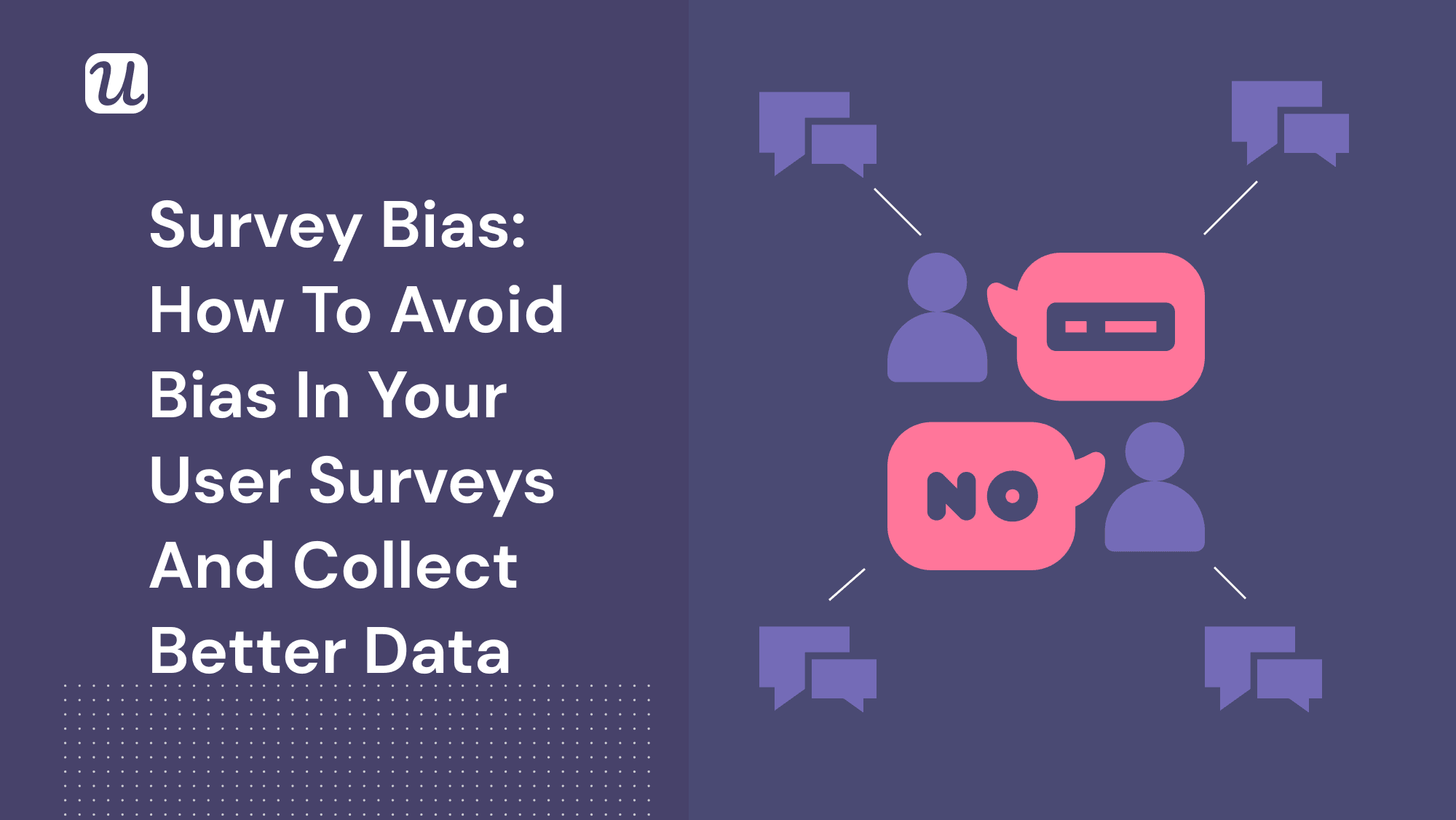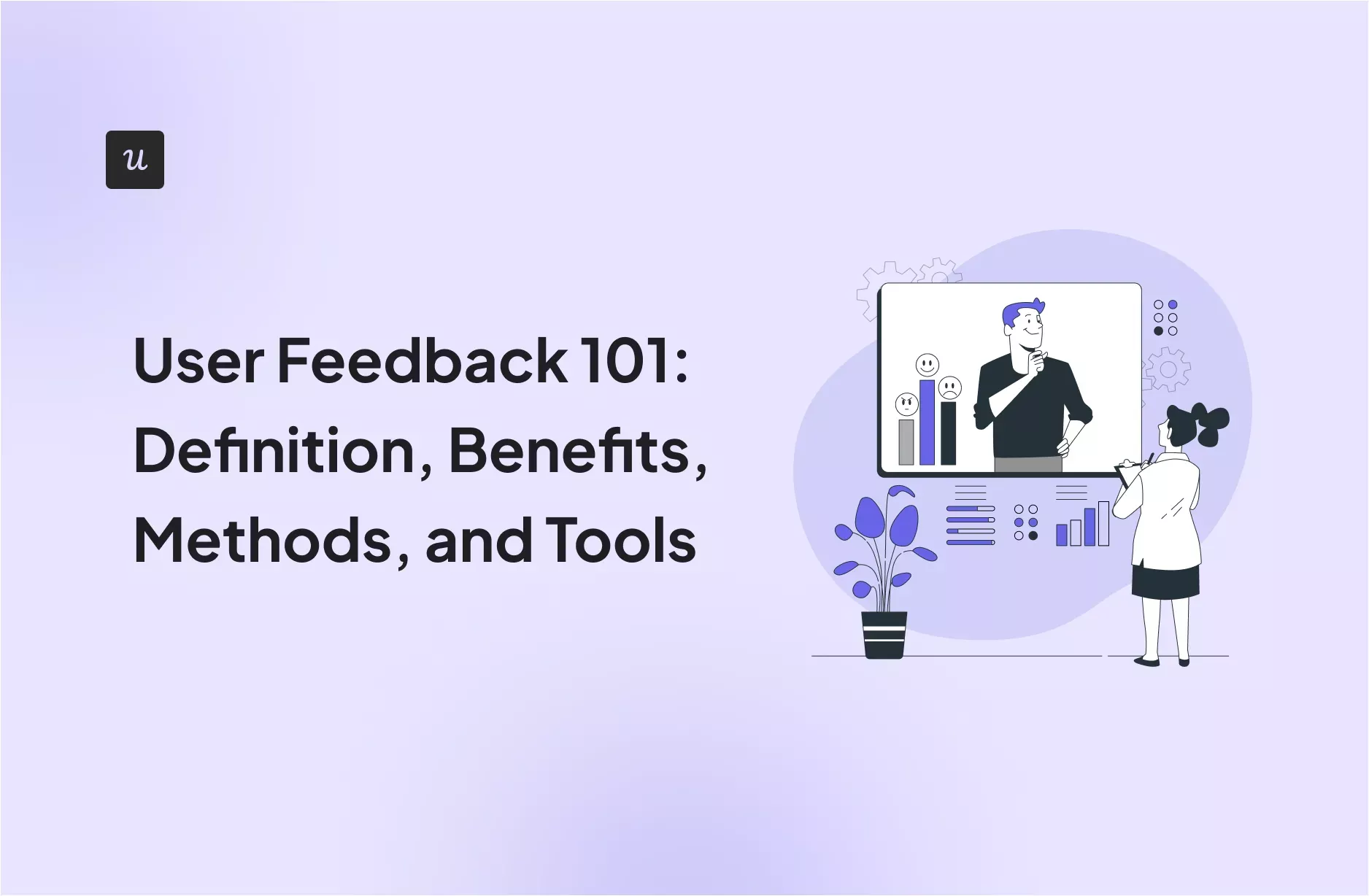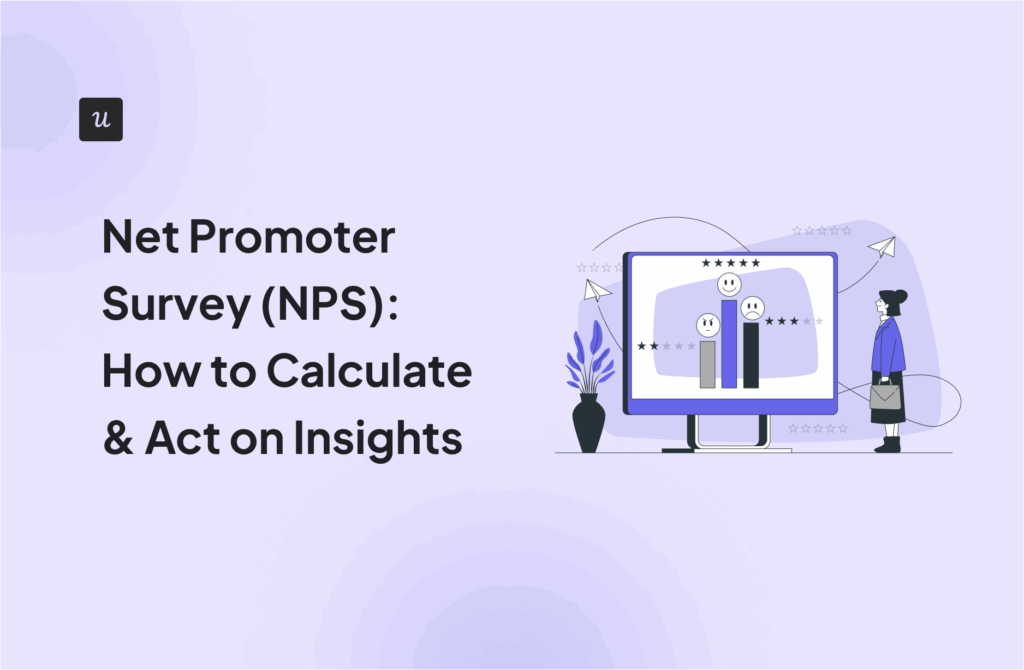
Survey Bias: How to Avoid Bias In Your User Surveys And Collect Better Data
Survey bias is real, and most of the time not intentional.
Conducting surveys regularly and gathering user sentiment data is one of the best ways to fast-track your business to success.
Without online surveys, you can’t generate leads, gather feedback, or collect important customer data.
The challenge is, your survey questions can trigger bias. Interestingly survey bias can be so subtle that survey creators and respondents might not even notice it. However, it’s a real problem survey creators face, and it results in irrelevant and inaccurate data.
So let’s change that.
In this article, let’s discuss survey bias and what you can do to avoid it. This way, you can reformat your survey questions more effectively, increase the number of qualified respondents, and conduct market research to the best of your ability.
Try Userpilot Now
See Why 1,000+ Teams Choose Userpilot

What is survey bias?
Survey bias refers to the presentation of survey content intended to cause people to subconsciously choose specific answers. It’s also the case if survey questions are too difficult to understand, ambiguous, or outright impossible to answer.
Generally, survey bias happens because conducting surveys and gathering data are time-consuming tasks.
Consequently, this causes the survey creator to rush the distribution of their surveys to people. And because of their haste, they may end up asking poorly chosen questions and presenting terrible answer options.
It’s either that or they want to achieve a specific result.
In the process, they select a target group of respondents that are compromised. They know these people will answer with certain responses — the responses they want. If this is the case, chances are, the survey creator is inexperienced.
The main types of survey bias
- Response bias – In this type of bias, the options for responses are predetermined. For example, the respondents have to decide between “positive” and “very positive” when asked about their experience.
- Selection bias – This leads to the creation of unrepresentative and incorrect data. Often, the cause is a poorly selected target market.
- Interviewer bias – The interviewer’s actions are causing the bias. It’s in the way they ask a question or how they make a respondent feel during the interview.
Why should you avoid survey bias?
Regardless of the type, survey bias has a disastrous effect, especially on the survey creator.
For one, it coerces respondents to answer dishonestly. And it defeats the purpose of conducting market research in the first place.
It will help if you use survey software that provides consumer-focused marketing.
It can aid in ensuring that your survey questions are free of bias and centered on getting insights from your target market, by providing custom user survey templates.
How to avoid bias in survey questions
The market research industry has a global revenue of over $73.4 billion. And unfortunately, survey bias has a negative impact on it.
If you fail to conduct effective market research, the quality of your operations will go down.
In addition to not getting the benefits of surveys (as mentioned above), you can’t access important feedback — feedback that can accelerate product development and administrative growth. If this continues, you’ll run out of business soon.
That’s why it’s your job to create unbiased surveys.
If you’re looking for some inspiration, here is a great collection of unbiased feedback forms templates.
Avoid leading questions in your surveys
Leading questions are types of questions that suggest a specific answer.
They‘re the easiest form of survey bias to spot. And while they’re almost effortless to identify, there may be instances when the respondents can’t help but answer them anyway.
The worst part? The respondents are made to believe they’re answering the survey questions honestly.
It’s also a possibility the respondents will think you’re playing mind games. They might think you’re intentionally trying to elicit a specific response.
And this results in negative reviews and a bad online reputation.

This question is leading the respondents to tell you about having a happy experience. It’s almost as if you’re instructing them to tell you their experience was a happy one.
A better way to present this:

Correcting this kind of bias is simple.
As the survey creator, simply review how you present your questions. Avoid using adjectives that can suggest you want to receive a specific response. And rephrase your questions as you see fit.
Notably, ensure you give respondents the freedom to answer the question on their own. The question above, for example, enables the respondents to describe their experience using their own words.
Avoid assumptive or loaded questions in your surveys
These are trick questions. They automatically position the respondents to take a defensive stand because these questions put them in a negative light.
You need to avoid inputting assumptive or loaded questions into your surveys because they’re offensive.
The damage they do is as extensive as bullying and harassing the respondents into providing you with an answer.
And the sole purpose they decided to give an answer isn’t because they have something valuable to say — it’s because they want to move on from your survey.
For the audience, identifying these questions isn’t always easy. It prevents the respondents from using logic. Rather than think clearly, they’re occupied with defending themselves.

Encountering the question above on a survey is insulting.
It implies a couple of assumptions — it assumes the respondent has a low attention span, and they had a negative experience.
If the assumptions are incorrect, it’s a blow on the respondent’s character. And if they are correct, they’re unnecessary.
A better way to present it:

To help you stop posing these questions, always ask neutrally.
Don’t ask things that state opinions or imply personal statements. Even if you feel strongly about expressing some statements, you need to keep matters professional.
And as you can see from the image above, the way the question was raised is apologetic and shows empathy.
The use of the word “if” also doesn’t present any assumptions.
Avoid double-barrelled questions in your surveys
This type of bias refers to asking respondents for two separate opinions about two unrelated subjects. But as you ask these pairs of questions, you provide them with a means to respond to only one.
Double-barrelled questions can be confusing. Chances are, the respondents will be annoyed at you.
Consequently, they won’t respond to your survey questions anymore.
They might also disregard other surveys from you and encourage their network to do the same.
Worst case scenario is these respondents will think so lowly of you. As a result, they’ll leave you a negative review that can permanently affect your reputation.

A better way to present it:

Instead of asking double-barrelled questions, always split the questions that are about two topics.
In fact, it’s better to ask one question at a time. Remember, even if they’re closely related, most questions need to be presented separately.
And like in the case above, a single question was asked. The question asking the respondent to “describe the compensation packages offered to them in their previous employment” was omitted.
Avoid using jargon in your surveys
Using jargon may make you think you’re being inclusive in your surveys. But it’s a presumptive way of communicating your questions to the respondents.
When using jargon, you’re presuming the one you’re talking to is “in the know”. This leads to using particular words — words they actually can’t understand.
Ultimately, this confuses respondents.
Encountering these questions might also make them feel they’re not smart enough for your surveys.
In addition to ending up with fewer survey respondents, this reflects badly on you. It suggests you have poor communication skills and have no authority over your respondents.

The abovementioned survey question shows bias in its use of the term “environmentally friendly”. While people working in sectors related to climate change are familiar with it, others don’t know what it means.
If a person unfamiliar with the term encounters it in a survey question, chances are they’ll evade that. They might also give a spur-of-the-moment (false) answer or completely give up on your survey.
A better way to present this:

Sometimes, using jargon can’t be avoided. And that’s alright. Experienced survey creators know it. The solution they propose is to include the definition of the word.
As the images above reflect, the same question was posed. In the second image, the term came with a definition.
Avoid poor answer scale options
If your survey questions revolve around ratings and scales, these are much easier for respondents to process.
The problem? The scales can be presented poorly.
Usually, this is identifiable in survey questions with just two options as answers.

While common, it’s a poorly presented answer scale option. For one, it’s unclear and it doesn’t state what a scale rating of 1 means. It also doesn’t provide valuable information to the survey creator.
A better way of presenting this:

As you can observe from the image above, the answer options are simpler and easier to understand.
The solution to poor answer scale options? Define what a specific number on a scale means.
Avoid confusing answer scale formatting
If the questions use a confusing answer scale formatting, you also have a problem. They’re almost designed to be intentionally vague and confusing.
Consequently, this pressures the respondents into answering the survey question or giving a rating that’s inaccurate, irrelevant, and rushed.

This qualifies as a question that uses a confusing answer scale formatting because it confuses respondents.
For one, the question is vague. It’s also hard for the respondents to know which of the two questions is the one they should answer.
A better way of presenting this:

The good news is, as a survey creator, you can easily fix this.
Simply read your question aloud. And from the perspective of someone listening, check to see if you can understand it with little effort. Better yet, have someone read it out for you.
If you have trouble understanding the question, reword it to a sentence with a clearer message and one that’s easier to understand.
Golden rules of avoiding survey bias
Avoiding question bias comes down to putting yourself in the shoes of your respondents.
If you want them to respond to your questions as effectively as possible, ask the type of questions you’d want to answer as effectively as possible, too.
Here are dos and don’ts:
- Do: Write clearly. Avoid double negatives, confusing language, or jargon.
If your survey question is clear to you, it doesn’t automatically suggest it’s clear to everybody else. Always simplify your questions and use basic words.
- Don’t: Lead the person answering the question or make assumptions.
Allow the respondents to provide answers as they see fit — even if their answers aren’t leaning towards the response you want. Besides, if they don’t answer with the response you want, it suggests that these people are answering your surveys honestly.
- Do: Check your answer options. Make sure they are clear and relevant to the question.
It can be easy to forget about an answer option’s relevance when you’re asking a bunch of survey questions. But avoid making this mistake because irrelevance can always trigger the respondents from discontinuing your survey.
- Don’t: Overload the respondent. Keep questions simple and avoid double-barrelled questions.
A practical approach is to organize all the questions you want to ask. List them all down then assign them to specific categories.
- Do: Keep your target respondents in mind. Speak their language. And tailor your surveys to them.
For example, your target respondents are beginners in digital marketing. Then write questions that address the concerns of these people. And avoid using references that only apply to experts.
- Don’t: Bore the respondent with a single type of survey question. Instead, use a good mix of open-ended and closed-ended questions.
For example, don’t keep asking questions that are limited to “yes” or “no” answers. Be sure to throw in questions that allow them to share unique details.
- Do: Format surveys so they are easy to use on all devices. Surveys that may appear well on most desktop computers may not be readable on smaller screens.
Use tools that allow responsive formatting. And design surveys that are accessible to mobile users.
Rounding it up
Conducting surveys is an important aspect of market research. And while you may mean well in how you presented your survey questions, survey bias is part of the picture. That’s why it’s best to always review every question, as well as your entire survey.
__________________________________________________________________________________________________
Author Bio:

Rebecca DiCioccio is the Marketing Manager at Paperform. Outside of work, Rebecca can be found exploring the outdoors or with a book in hand. Rebecca’s background in copywriting and keen interest in SEO and digital marketing mean she understands the importance of staying up to date with the latest trends in a dynamic and ever changing industry.







